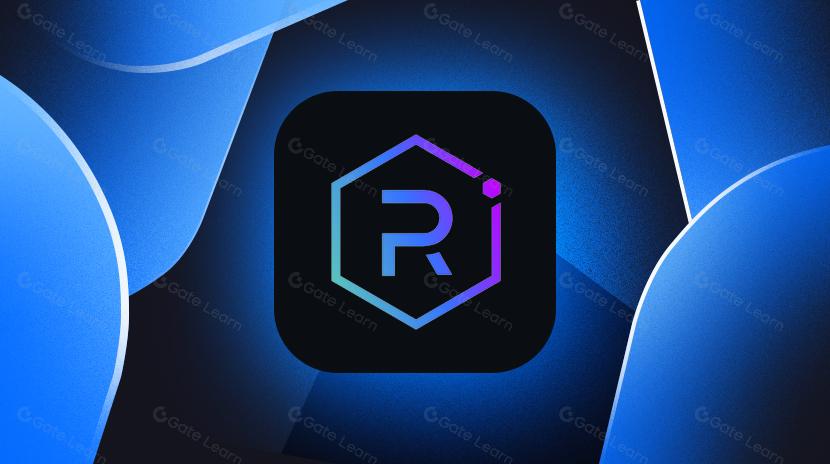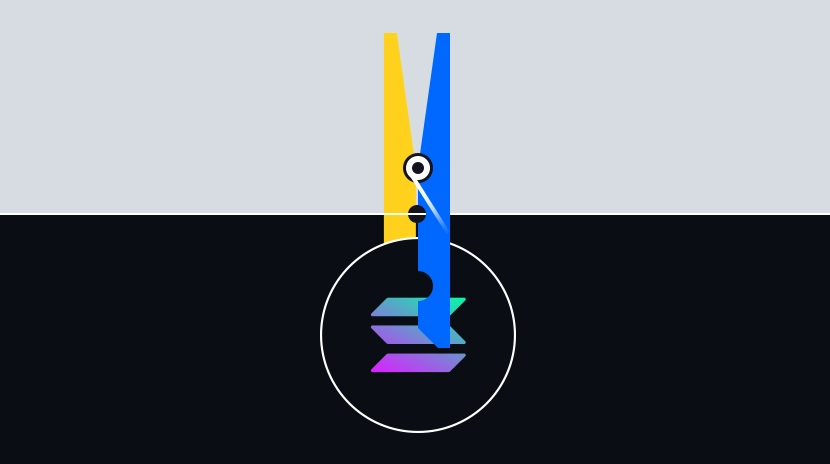把赚来的 SOL 放在哪里收益更高?
随着 Solana 生态系统的不断壮大,越来越多的投资者开始关注如何利用赚来的 SOL 实现资产增值。无论是通过官方质押,还是参与各类 DeFi 项目,投资者都有机会在支持网络安全与流动性的同时,获取可观的收益。但每种方式都有其独特的特点和潜在风险,包括收益率的波动、质押资产的流动性限制以及智能合约漏洞等问题。本文将详细介绍 Solana 官方质押、Kraken、Lido、Serum、Raydium、Tulip Protocol 以及其他主流平台的操作要求、收益率、适用池子、收益周期以及各自的优势与劣势。1. Solana 官方质押
平台:Solana Network
收益率:年化收益率大约在 6%-8% 之间,具体取决于所选的 validator 节点的表现。
适用池子:无需选择具体池子,直接通过 Solana 钱包进行质押。
收益周期:奖励通常每两个 epoch(约两天)自动发放。
优势:
质押过程简单、安全,适合长期持有者。
无需第三方平台,直接通过官方钱包参与质押,透明度高。
劣势:
质押资产的流动性较低,如果你需要提前赎回 SOL,可能需要面临解锁期的等待。
如果选择的 validator 表现不佳,可能会影响奖励。
2. Gate 交易所
平台:Gate 交易所
收益率:年化收益率大约为 6%-8%。
适用池子:会根据平台策略自动选择validator节点,无需自己手动选择。
优势:
操作简单,平台安全可靠,非常适合对技术不太熟悉的用户。
无最低质押量要求,适合各种规模的投资者。
劣势:
Gate 交易所是一个中心化平台,质押的资产并不完全由用户控制,存在一定的平台风险。
质押的灵活性较低,提现可能会受到一些限制。
相关安全策略:
平台设有保险基金和风险准备金,用于应对可能的安全事故;
实施严格的 KYC 和 AML 政策,保障交易环境的整体安全;
定期进行安全测试和第三方审计,确保系统漏洞及时修复,提升资产保护能力。
3. Lido
平台:Lido(跨链质押平台)
收益率:年化收益率大约7%。
适用池子:Lido 提供 SOL 质押,并通过发放 stSOL 代币,让用户在 DeFi 协议中使用其流动性。
收益周期:通过 Lido 获得的 stSOL 代币可以在其他 DeFi 平台中随时使用,流动性较高。
优势:
持有 stSOL 代币,能够在其他 DeFi 协议中赚取更多收益。
灵活性较强,适合对流动性有需求的投资者。
劣势:
除了质押奖励外,DeFi 平台的风险较高,可能涉及到智能合约漏洞或流动性问题。
在市场波动较大时,stSOL 代币的价值可能会发生波动。
安全性:Lido 在多个链上均有较高的 TVL 表现,尤其在以太坊等主流链上,其 TVL 常居前列;平台采用去中心化的节点运营模式,通过严格筛选优质的 validator 节点分散风险,保障质押收益的稳定性。
4. Serum
平台:去中心化交易所(DEX)
收益率:年化收益率大约在 10%-30% 之间,具体取决于交易量和池子流动性。
适用池子:用户可以选择将 SOL 与其他代币(如 USDT、USDC、ETH 等)提供给交易对池,获得流动性奖励。
收益周期:奖励实时更新,根据交易量和流动性动态调整。
优势:
在去中心化平台上提供流动性,避免了中心化平台的限制。
由于 Solana 的高吞吐量,交易速度快,流动性提供者有机会赚取更多手续费。
劣势:
交易量波动较大时,收益可能不稳定。
代币价格的波动也会影响池子的实际收益。
安全性:Serum 在 Solana 生态中以较高的 TVL 表现和严格的流动性管理著称;平台基于完全去中心化的交易机制,并经过多次第三方安全审计,通过公开透明的全链上订单簿和流动性池管理,有效分散风险,保障用户资金安全。
5. Raydium
平台:AMM(自动做市商)和流动性池
收益率:年化收益率大约在 10%-25% 之间,受池子流动性和交易量影响较大。
适用池子:用户需要提供至少两种代币(例如 SOL/USDT、SOL/USDC 等)进行质押。
收益周期:奖励通过 Raydium 平台的流动性池进行分配,收益实时更新。
优势:
提供较高的年化收益,适合有一定流动性资金的用户。
交易费用较低,且 Solana 生态的交易速度快,流动性较强。
劣势:
市场波动较大时,可能面临滑点风险。
流动性池较小或者交易量不足时,用户可能无法获得理想的收益。
安全性:Raydium 在 Solana 上运营的 AMM 平台 TVL 表现稳定;平台采用自动化市场做市机制,并结合严格的安全审计和风控措施,通过分散流动性池风险,确保资产在交易过程中得到充分保护。
6. Tulip Protocol
平台:借贷协议
质押要求:
Tulip 是一个 Solana 链上的借贷协议,用户可以将 SOL 和其他资产(如 USDC、USDT 等)存入 Tulip 协议,获得利息。用户无需与他人进行质押,而是直接通过将资产提供给Tulip协议来赚取奖励。
收益率:
年化收益率大约 6%-15%,具体取决于所质押的资产种类和市场需求的波动。
奖励通常以利息形式发放,用户可以按天或月获得利息,具体取决于 Tulip 协议的市场状况。
收益周期:
根据市场需求,用户可以按天或按月获得利息,享有灵活的收益分配方式。
优势:
无需与他人质押:Tulip 协议允许用户直接通过存入资产赚取利息,避免了和其他用户进行质押的复杂性。
稳定的利息收入:对长期投资者尤其合适,能够为资产提供持续稳定的回报。
简单的操作流程:用户只需将资产存入协议,剩下的交给Tulip协议来管理。
劣势:
借贷风险:由于 Tulip 协议依赖于借贷市场,如果借款人未按时偿还贷款,可能会导致部分质押的资产面临风险。
智能合约风险:Tulip 协议依赖智能合约,存在一定的技术风险。智能合约可能存在漏洞或受到攻击,导致资产损失。
7. Orca (SOL/USDC Whirlpool)
平台:AMM 和流动性池
收益率:年化收益率大约在 8%-15% 之间,适合低滑点集中流动性池。
适用池子:提供 SOL/USDC 等稳定币流动性。
收益周期:奖励实时发放,用户可以随时查看收益。
优势:
支持自定义价格区间,适合主动管理的投资者。
提供低滑点交易,适合进行稳定币交易的用户。
劣势:
需要较强的流动性管理能力,不适合初学者。
流动性池的风险仍然存在,尤其在价格波动较大时。
8. Mango Markets
平台:去中心化交易和借贷平台
收益率:年化收益率大约在 8%-20% 之间,具体取决于提供的流动性情况。
适用池子:用户可以通过提供 SOL、USDT、USDC 等资产的流动性来赚取奖励。
收益周期:奖励来自交易手续费和借贷市场的利息,随时可获取。
优势:
提供了杠杆交易功能,可以扩大收益。
作为去中心化平台,用户能够掌控自己的资产。
劣势:
杠杆交易的风险较高,市场波动时可能带来较大损失。
流动性不足时,可能无法获得预期收益。
安全性:Mango Markets 作为 Solana 生态内的去中心化交易与借贷平台,其 TVL 和风险控制策略均表现出色;平台采用分布式治理和多重安全审计措施,对杠杆交易和借贷活动实施严格风险分散,保障用户资金在市场波动中的安全性。
9. Saber
平台:专注于稳定币流动性池
收益率:年化收益率大约在 5%-15% 之间,受池子流动性和交易量影响。
适用池子:稳定币池(如 USDC、USDT 等)。
收益周期:奖励通过交易手续费和流动性挖矿分配,实时更新。
优势:
稳定币池的收益较为稳定,适合低风险投资者。
提供稳定的收益来源,适合长期持有。
劣势:
如果池子流动性不足,可能无法赚取理想的收益。
市场波动仍会影响整体收益,尽管相对稳定。
10. Marinade Finance (mSOL)
平台:Solana 链质押平台
收益率:基础收益大约在 7%-8%,通过 DeFi 组合收益(如 mSOL/USDC LP 挖矿)可增加 +10%-15%。
适用池子:mSOL 代币适用于流动性池,特别是 DeFi 平台。
收益周期:奖励随时发放,用户可以灵活赎回。
优势:
自动选择最佳验证节点,支持即时赎回。
适合喜欢灵活操作的投资者。
劣势:
需要关注 DeFi 池子和流动性风险。
11. Jito (jitoSOL)
平台:优化 MEV 捕获的 Solana 质押平台
收益率:年化收益率 7%-8% + MEV 奖励分成(+1%-3%)。
适用池子:适合长期持有的质押者。
收益周期:奖励定期发放。
优势:
优化了 MEV 捕获,能带来额外收益。
适合长期持有者,稳定性较强。
劣势:
对短期投资者的吸引力较小,适合有长期规划的投资者。
总结

选择合适的质押和 DeFi 项目需要根据个人的风险承受能力、流动性需求以及收益期望来做出决定。对于寻求稳定收益和较低风险的投资者,Solana 官方质押和Gate 交易所是不错的选择;如果你希望获得更高的回报并能够承担一定的风险,Raydium、Serum 等 DeFi 项目将是更好的选择。
相关文章

Master Protocol:激活 BTC 生息潜力

BTC Staking赛道Map梳理

Solana 链上购买 Meme 币全攻略

BTC LSD,如何帮助更多用户分享 BTC 质押收益?

Raydium 简介
